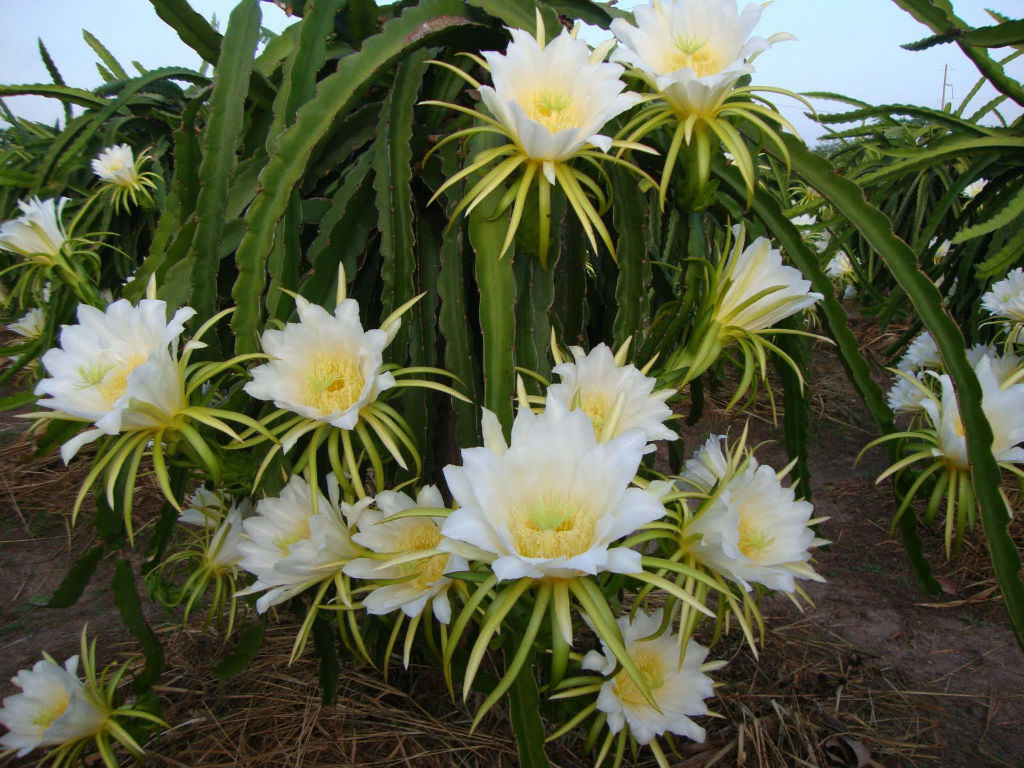
Hylocereus undatus (Dragon Fruit) World of Succulents
This cactus thrives best in temperatures ranging from 65-80°F (18-27°C). Uses: The main use of Selenicereus undatus is for its fruit, which has a sweet, mild flavor and a unique, attractive appearance. The fruit can be eaten fresh, added to smoothies or desserts, or used to make jams and other preserves.

Hylocereus Undatus Plant How to grow a Dragon Fruit Cactus from a cutting The fruit is
Description. Selenicereus undatus, formerly known as Hylocereus undatus, is a lithophytic or hemiepiphytic cactus with creeping, sprawling, or clambering stems. It branches profusely. Stems grow up to 33 feet (10 m) long and climb by aerial roots. They are green, with up to 4 feet (1.2 m) long joints, generally three ribs, and 1 to 3 conical.

Hylocereus undatus Night Blooming Cereus, Dragon Fruit World of Succulents
Last updated on: January 18, 2022 by Annette Hird Spread the love This interesting species of cactus is quite unusual in that it prefers to grow in sub-tropical areas. It has enormous white flowers that only open at night. After flowering, the plant produces spectacular-looking fruits that are edible.

Hylocereus undatus (Cactaceae) image 90997 at PhytoImages.siu.edu
Fl. Bermuda 256 (fig. 278). 1918 Family: CACTACEAE Hylocereus undatus Photo by: Julio C. García (Night-blooming cereus) The flowers are huge ornate and beautiful and - as indicated by the name - they appear only at night and soon close after the day starts. The plant may grow out of, and over the ground or climb onto trees using aerial roots.
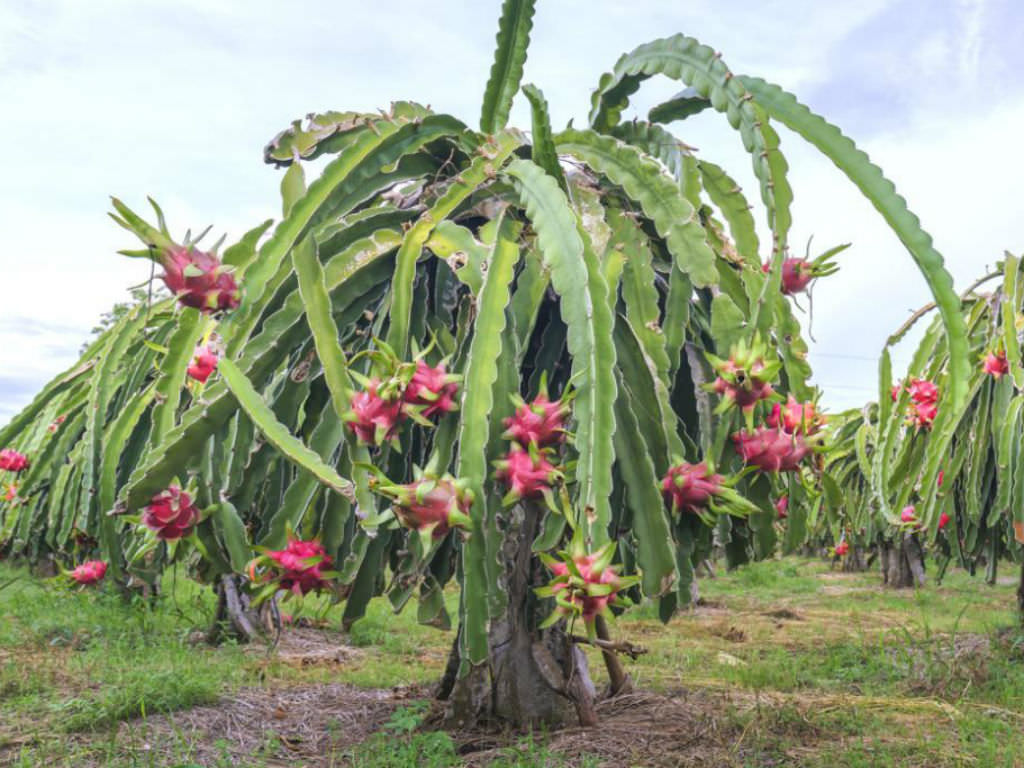
Hylocereus undatus (Dragon Fruit) World of Succulents
They should be treated with mild soap solutions or diluted alcohol as soon as the pests are observed. Plants grown for food, especially on a large scale, are prone to thrips. An environmental approach to managing these by most farmers is through the use of the pest's natural enemies like ladybugs and lacewing larvae.

Hylocereus undatus (Cactaceae) image 90926 at PhytoImages.siu.edu
Hylocereus undatus. La pitahaya is a cactus native to Central America that grows as a hemiepiphyte shrub normally, although it can be a climber if it is provided with a support to climb on. The stems are green, and white flowers with greenish tepals sprout from their areolas. The fruit is a red or yellow berry that measures up to 12 centimeters.

Hylocereus undatus "Dragon Fruit, White Flesh" [ROOTED CUTTING, 3.5" Mallacht's Plants
Monica Sánchez Geen reacties De cactussen van het geslacht Hylocereus worden gekenmerkt door planten van goede grootte, naast het produceren van bloemen van buitengewone schoonheid. Hoewel deze helaas nachtdieren zijn, is het de moeite waard om op te blijven om ze te zien, omdat ze ook heel kort open blijven omdat ze bij zonsopgang sluiten.

Hylocereus Undatus ubicaciondepersonas.cdmx.gob.mx
You can grow the dragon fruit plant ( Hylocereus undatus) indoors if your home has a location with plenty of sunlight, such as a sunroom or a large window where the plant gets six to eight hours of sunlight. To make an indoor dragon fruit cactus bear fruit might require hand-pollination, a job that is done by moths, bats, and bees outdoors.
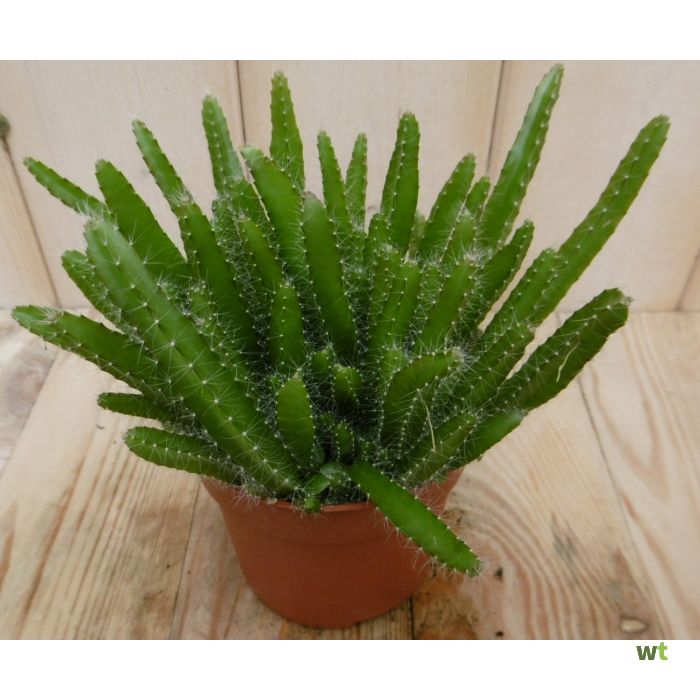
Hylocereus Undatus ubicaciondepersonas.cdmx.gob.mx
Figure 1. White- and red-pulped dragonfruit. Credit: Ian Maguire, UF/IFAS Scientific Name: Hylocereus undatus and other species and hybrids (Table 1). Common Names: English: Strawberry pear, dragonfruit, night-blooming cereus. Spanish: pitahaya, tuna, nopal, pitajaya. Family: Cactaceae
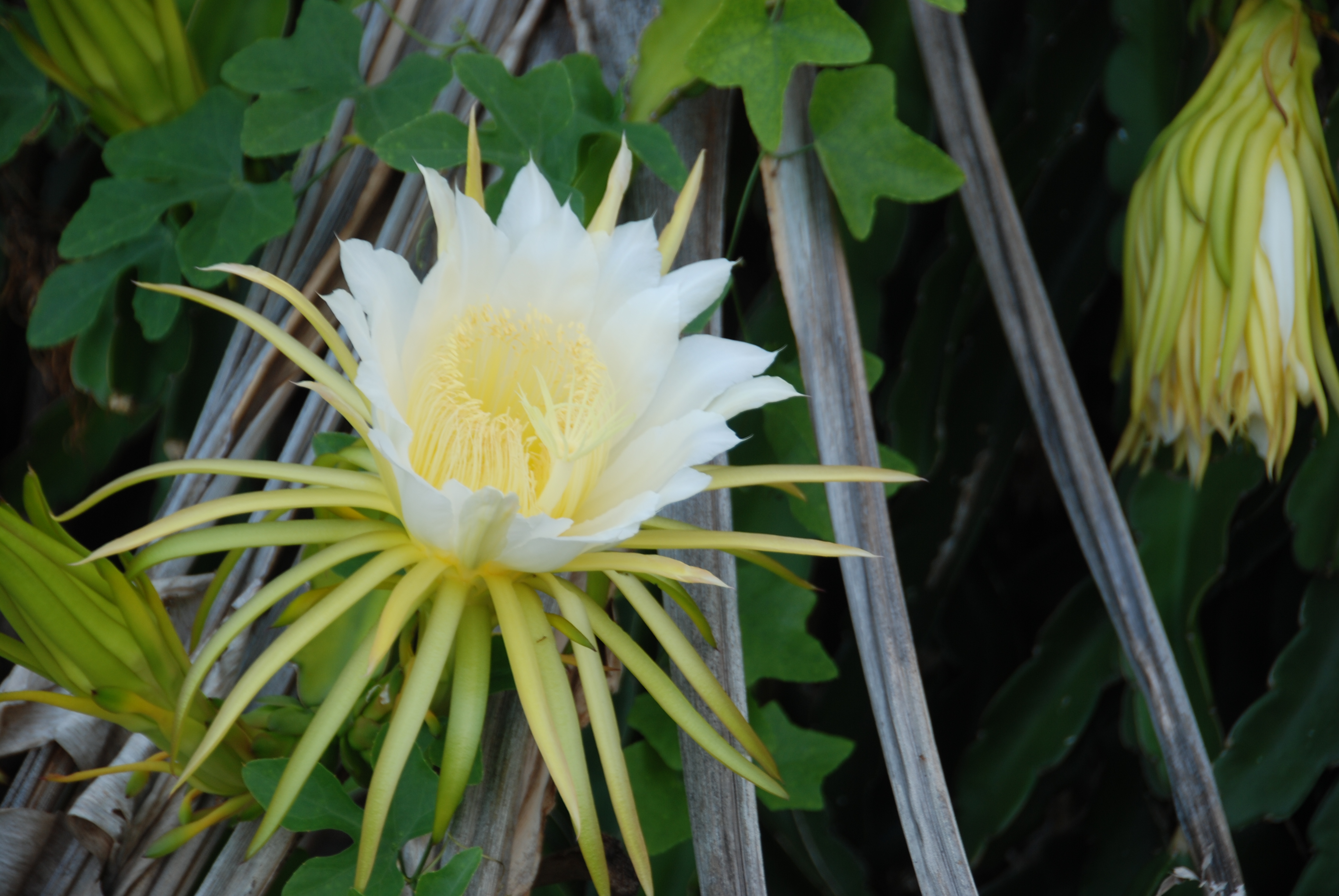
Kaktus des Jahres 2021 Die Drachenfrucht, Hylocereus undatus Deutsche KakteenGesellschaft e. V.
. Dragon fruit Hylocereus undatus is one of the most unruly species in the entire cactus family. It is a hemi-epiphyte, its fleshy, three-angled, jointed stems clamber over other plants and produce fibrous, aerial roots that cling to any available surface.
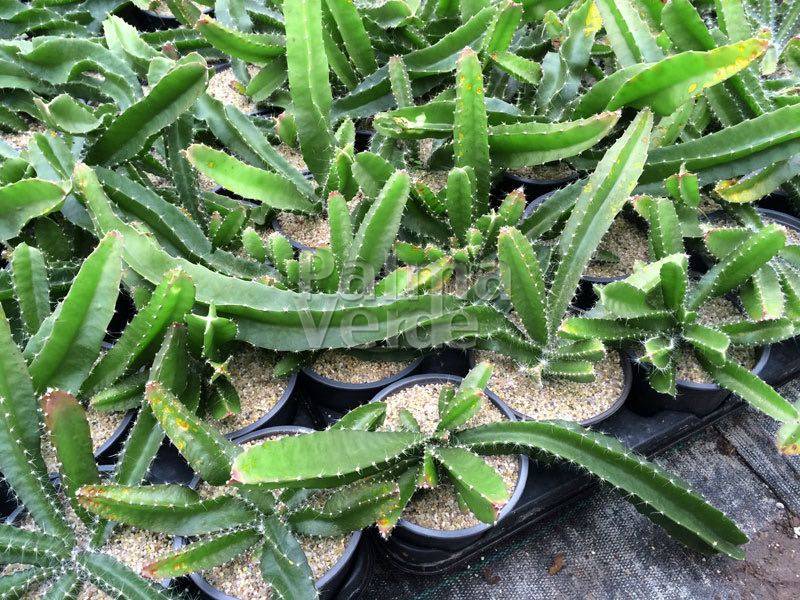
Hylocereus undatus Pitaya Drakenvrucht Palma Verde Exoten V.O.F.
Like dog tails. Need a succulent plant care refresher? Check out the Beginners Guide to Succulent Care. Light Requirements Dragonfruit plants do not grow well in low light. Give it plenty of bright sunlight. A south-facing window where it gets at least 6 hours of sun is ideal.
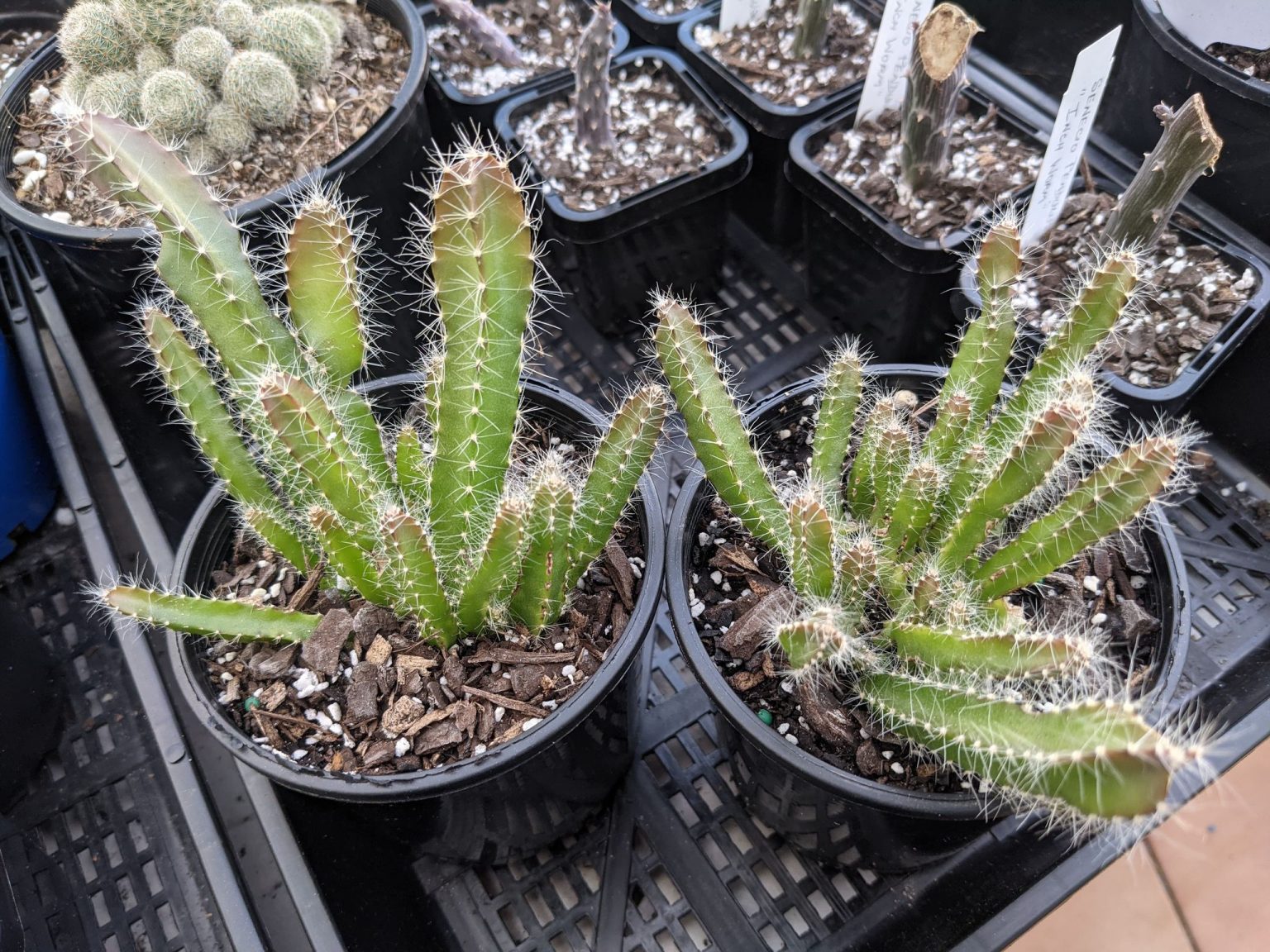
Hylocereus Undatus SUCCERLAND
Hylocereus undatus, also known as the Nightblooming cactus, is a climbing cactus that is often found trailing over rocks or as an epiphyte hanging down from branches of other plants on which is has become established. The stems of most cacti are photosynthetic therefore they are green in color due to the presence of the plant pigment chlorophyll.
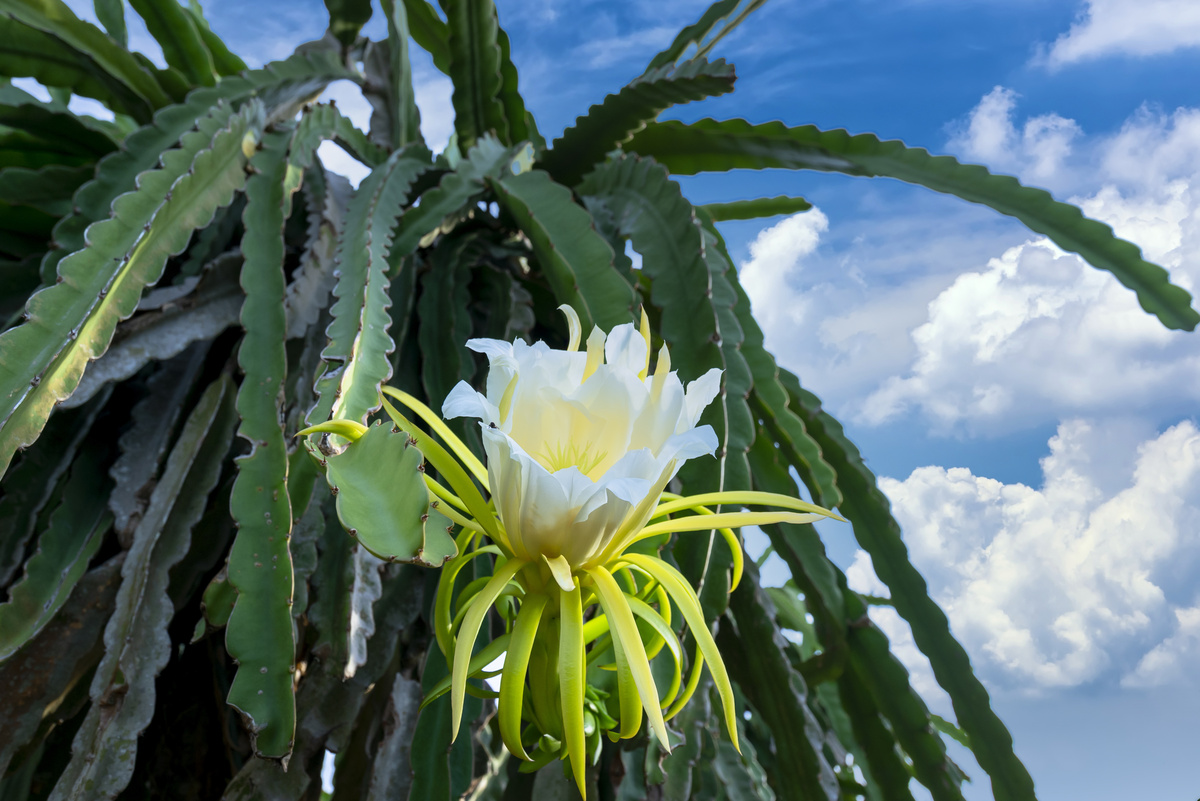
Rainhadanoite Hylocereus undatus um guia para cultivar e cuidar do cacto noturno Take Care
Dive into Hylocereus undatus cultivation, explore the vibrant world of Dragon Fruit Cactus, and discover the unique health benefits it brings to the table. Key Takeaways: This tropical cactus, often referred to as dragon fruit or pitaya, originates from Central America. Multiple varieties exist, each showcasing unique characteristics and.
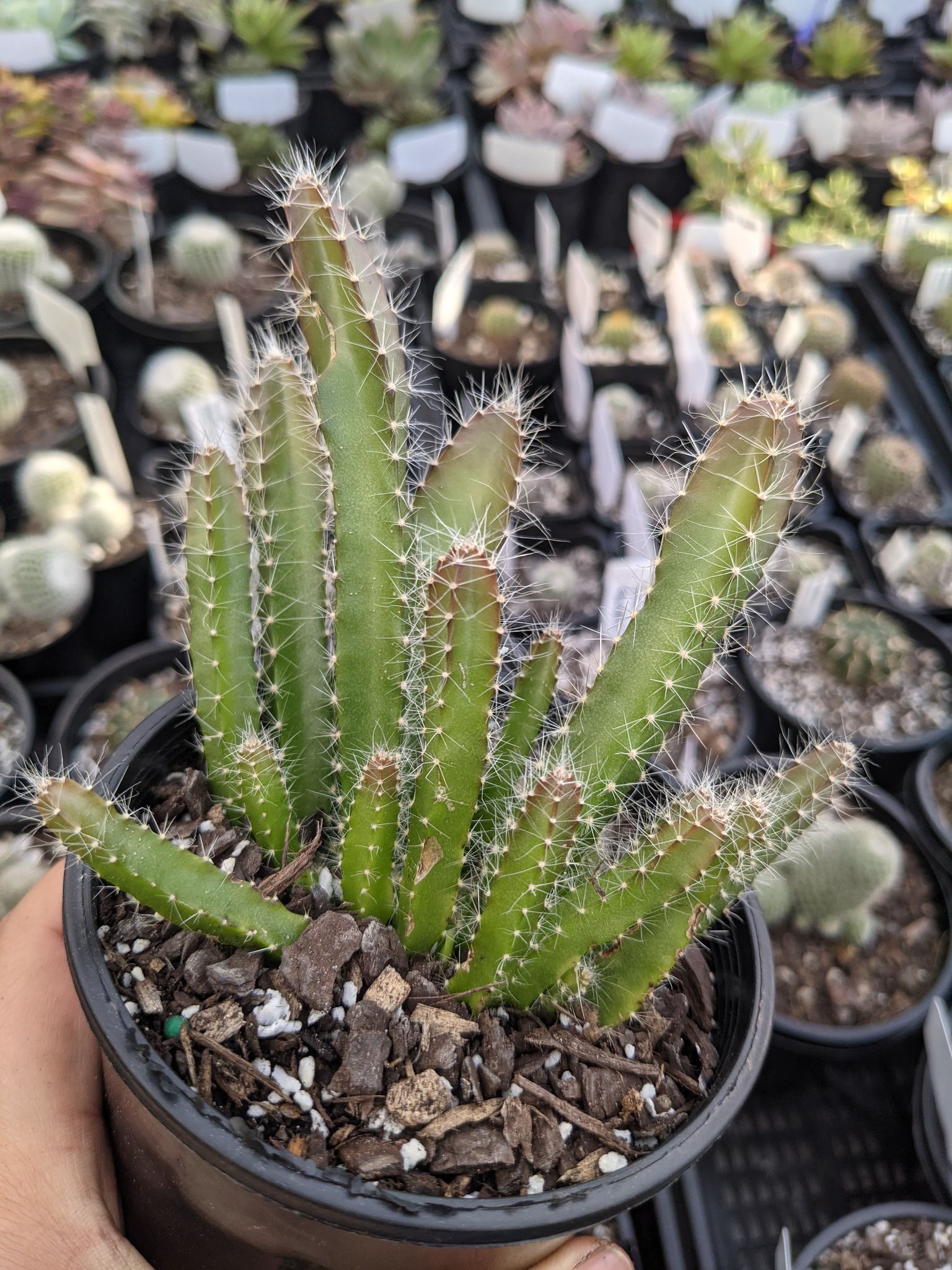
Hylocereus Undatus SUCCERLAND
This datasheet on Hylocereus undatus covers Identity, Overview, Associated Diseases, Pests or Pathogens, Distribution, Dispersal, Hosts/Species Affected, Diagnosis, Biology & Ecology, Natural Enemies, Impacts, Uses, Prevention/Control, Management, Genetics and Breeding, Food Quality, Economics, Further Information. Identity

Hylocereus undatus Night Blooming Cereus, Dragon Fruit World of Succulents
Hylocereus undatus is a fast growing, many branched vine-like cactus with triangular, three, four, and sometimes five sided jointed stems. The stems form strong aerial roots that adhere to tree rock or surfaces where they climb and scramble to heights of 15-20 feet. During summer and fall the plant produces very large, fragrant white flowers.
hortus apertus Hylocereus undatus 1
Care Types Pruning Propagating Harvesting Common Pests & Diseases Common Issues FAQ If you're looking for a truly other-worldly fruit to grow on a plant that blooms only at night with large fragrant flowers, look no further than the dragon fruit cactus.